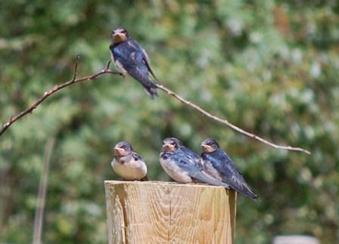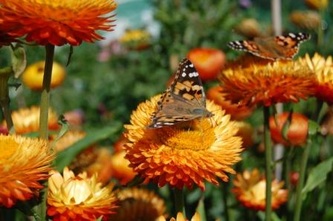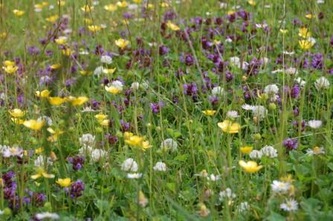We run our holding to benefit wildlife
When we first arrived at Wester Gladstone, it was just an area of fenced off rough pasture with two trees - one of which blew down in our first winter here.
We have planted hedges round our entire perimeter - 8,000 native trees. We have left some wild areas as cover for wildlife and the bird numbers have soared over the years. The hedges have created a new microclimate by cutting down the wind, which has helped us in the vegetable garden and our livestock, as well as the wildlife.
The hedges are now big and thick enough to be used as nesting sites by various birds, both in the branches and underneath on the ground. This is also an excellent habitat for insect and amphibian life, part of the cycle of nature.
We have planted hedges round our entire perimeter - 8,000 native trees. We have left some wild areas as cover for wildlife and the bird numbers have soared over the years. The hedges have created a new microclimate by cutting down the wind, which has helped us in the vegetable garden and our livestock, as well as the wildlife.
The hedges are now big and thick enough to be used as nesting sites by various birds, both in the branches and underneath on the ground. This is also an excellent habitat for insect and amphibian life, part of the cycle of nature.
Swallows in the barn

On 19 June the first swallows were almost ready to fledge, with at least three more broods coming on in various places. With the decline in the number of swallows, we are delighted to be able to offer them a safe refuge. In some years, the swallows are later getting established but there are always several broods fledged successfully.
Swallows out and about

Here they are the next morning, newly fledged, waiting for their parents to feed them.
Warbler nestlings

In the big wind we had at the end of May, we worried about these tiny warbler nestlings, whose nest was swaying alarmingly while their mother was hanging on grimly, trying to protect her chicks from being blown away. Eventually all three fledged successfully.
We have left our pastures to grow without reseeding and we don't use artificial fertilisers, herbicides or pesticides. This means that we have a large variety of plant species in the pasture, which suits our Hebridean and Soay rare breed sheep as they prefer a rich mixture of plants and herbs to eat, as well as
grass.
The big ivy growing over the barn roof provides wonderful nesting sites for all sorts of birds - including the Scots Grey hens occasionally ! Inside the barn we have swallows every year nesting on the beams,
and blackbirds making their nests in every awkward place they can think of - once the chicks fledge, baby blackbirds are to be seen sitting on shelves, on the freezer, on the motorbike, everywhere.
In a wood across the road there is a very successful sparrow hawk - she takes some of the smaller
birds which we support, but this is just part of the cycle of life and we admire her skill and beauty. Other birds of prey in the area are Buzzards, Peregrine Falcons, Kestrels and various owls - none of which actually nest within our boundaries, although we would like to attract them.
Last year, we noticed a complete absence of wrens, and the same last year. This must be the result of the long and severe cold we have had for the last two winters. On the other hand, for the first time Yellow Hammers (Yites) have nested successfully in our hedge. One of our favourite birds which nests here every year is the lark and we look forward to his spring song every bit as much as we look forward to the
arrival of the swallows.
grass.
The big ivy growing over the barn roof provides wonderful nesting sites for all sorts of birds - including the Scots Grey hens occasionally ! Inside the barn we have swallows every year nesting on the beams,
and blackbirds making their nests in every awkward place they can think of - once the chicks fledge, baby blackbirds are to be seen sitting on shelves, on the freezer, on the motorbike, everywhere.
In a wood across the road there is a very successful sparrow hawk - she takes some of the smaller
birds which we support, but this is just part of the cycle of life and we admire her skill and beauty. Other birds of prey in the area are Buzzards, Peregrine Falcons, Kestrels and various owls - none of which actually nest within our boundaries, although we would like to attract them.
Last year, we noticed a complete absence of wrens, and the same last year. This must be the result of the long and severe cold we have had for the last two winters. On the other hand, for the first time Yellow Hammers (Yites) have nested successfully in our hedge. One of our favourite birds which nests here every year is the lark and we look forward to his spring song every bit as much as we look forward to the
arrival of the swallows.






